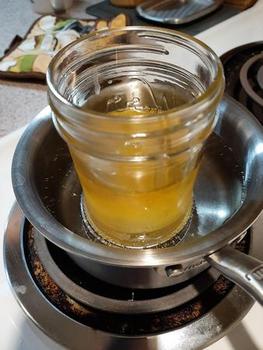Hi - I’m seeking suggestions for a material to use for a finish coat on a knife handle. My new knife came with a raw (unfinished) magnolia handle. I plan to change it when vendors restock the size & type that I want.
Meanwhile, I stained it with a mixture of mud-strength coffee plus tannin powder from walnuts. For coating it, I thought of shellac, because it’s “non-toxic when dry”, but it’s not a good choice around dampness. I do not want anything with toxic compounds in it, obviously, because I’m handling food. I’m considering using cutting board paste, and refreshing it monthly.
What do people use?
Meanwhile, I stained it with a mixture of mud-strength coffee plus tannin powder from walnuts. For coating it, I thought of shellac, because it’s “non-toxic when dry”, but it’s not a good choice around dampness. I do not want anything with toxic compounds in it, obviously, because I’m handling food. I’m considering using cutting board paste, and refreshing it monthly.
What do people use?



























